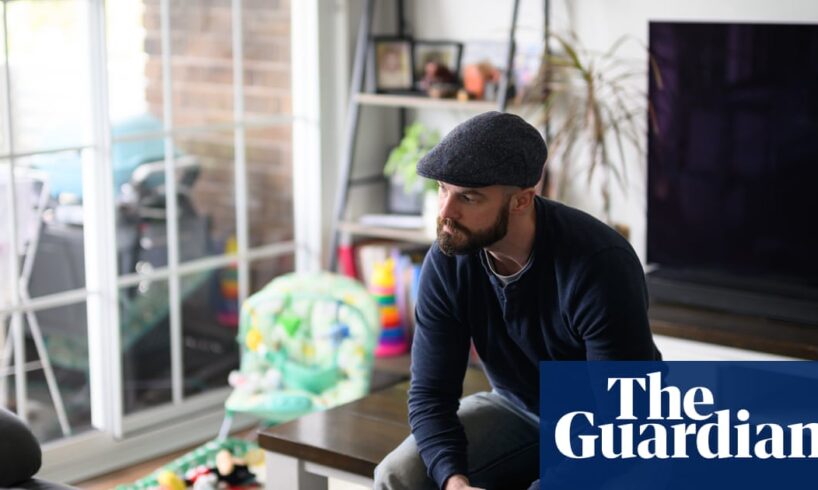
Ross Hamilton spends his work days in a laboratory developing treatments for fibrosis. At home, he sets aside as much time as possible to be with his partner, their four-year-old daughter and their baby boy, who was born just a few weeks ago.
The 43-year-old is well educated, works in a cutting-edge industry and is part of a dual-income household. But despite this, the couple cannot afford a family home anywhere near his Sydney workplace or prospective schools as property prices increase at a faster pace than the family can save for a deposit.
“It’s just capitalism gone crazy. A house is no longer a domicile. It’s an investment, and it’s pushed people out who just happened to be born later. That’s all it is,” says Hamilton.
“There’s a huge population now that had a bit of wealth years ago, and they bought property, and then it’s gone up dramatically since then.
“I don’t blame the players. I blame the game.”
Backed by favourable tax arrangements, property has been such a lucrative moneymaker over the past quarter century that affordability has deteriorated faster in Australia than in almost every other comparable country.
While the Reserve Bank held rates steady at its last meeting, borrowing costs have been falling this year, and there are expectations of more interest rate cuts to come, adding momentum to property prices.
Home prices in Sydney, Brisbane, Adelaide, Perth and Darwin are at peak levels, while Melbourne and Hobart are also rising.
Investors who have already built up equity in their housing portfolios are routinely winning bidding wars against first home buyers in a tight market, expanding the wealth divide that is fraying relations between the generations.
“The reason why it’s so frustrating is you are taught at a young age to get your education, get your career, and then at some point, you will be able to buy a home for your family,” says Hamilton, who was born in Ireland, studied overseas, and then came to Australia through a program designed to build the country’s research capabilities.
“I’ve worked hard, I have a PhD, I’ve got a career in a leading industry, and yet, despite all that, I still can’t get to that next level.
“It’s out of reach entirely.”
It becomes easier to buy your second, your third, your fourth property than it is your first oneMichael Fotheringham, research director
Market cannibalisation
There have been some curious changes in the rental market in recent months, with some city suburbs recording falling rents even as property prices take off again.
While this trend might sound like a positive development to address cost-of-living pressures, it does come at a cost. Anne Flaherty, a senior economist at REA Group, says investors are targeting the same sorts of properties as owner-occupiers leading to an influx of new rentals in sought-after locations.
“It makes sense that if there’s more investors, that increases the total supply of rental properties,” says Flaherty.
‘I just want to buy something that we want to live in, and just be at peace with it,’ says Hamilton. Photograph: James Gourley/The Guardian
“The flip side of that, of course, is that it’s increasingly hard for people to transition from becoming renters to owner-occupiers and they are kept in the rental market.”
Over the past five years, investors have increased their share of new home loans from 28% to 37%, according to Australian Bureau of Statistics data, while owner-occupier levels have fallen. The change is in keeping with longer-term trends, given the proportion of housing stock owned by investors has been rising for decades.
“It’s got to the point where there’s such great incentives to invest in property, it’s cannibalising the owner-occupier market,” says Michael Fotheringham, the managing director at the Australian Housing and Urban Research Institute. “It becomes easier to buy your second, your third, your fourth property than it is your first one.”
Those incentives have left many people clambering to get on to the property market, with strategies like “rent-vesting” (whereby a person rents one property while buying a more affordable one elsewhere) now seen as normal in Australia.
The unaffordable housing epoch
Australian house prices started to decouple from wages in the late 1980s, before a surge in the 90s and early 2000s propelled the country into an epoch of unaffordable housing that is only getting worse.
The Howard-era decision to halve the rate of capital gains tax made dwellings even more attractive to investors, while a string of state and federal governments failed to plan for supply shortages. Investors have also taken full advantage of negative gearing, which allows the owner of an investment property to deduct the interest payments and other costs against their income.
While Labor under Bill Shorten tried to tilt the tables in favour of owner-occupiers by tightening negative gearing and the capital gains tax discount, the measures proved unpalatable to many voters. The policies, which were never implemented, were also designed to push investors towards new builds with the aim of increasing supply.
Fotheringham says there are still feasible ways to curb tax incentives for investors, such as capping the number of properties that can be negatively geared.
“If you start to rein it in you could get it to a point where it’s a controlled measure. At the moment, about half of all rental properties in this country are negatively geared; that was never the intent,” he says.
“It took us a long time to get into this hole, so it’s going to take us a long time to get out of it.”
Analysis by Treasury has found that nearly 40% of tax breaks to landlords went to the top 10% of earners.
Many affordability advocates have given up on genuine tax reform in Australia and are instead focusing their attention on rental rights. The thinking is that by improving tenancy rights, investment properties become less appealing, freeing up stock for owner-occupiers.
This would also make renting a more enticing option for households, as it is in some other countries such as Germany where many households prefer to rent.
Extreme prices
Housing pressures are building across the country, with Adelaide, once known as one of the country’s most affordable cities, now among the least accessible for prospective homeowners with the city’s dwelling value to income ratio sitting at 9, according to Cotality data.
Sydney remains the most unaffordable among Australian state capitals, with that ratio at 9.8.
Hamilton says he fears the wealth gap between generations may have become too great to rein in. Photograph: James Gourley/The Guardian
First home owners have been largely locked out of the market this year, according to Equifax analysis of mortgage demand, due to high property prices. While there is an expectation that falling interest rates and upcoming government measures – including Labor’s policy to allow first time buyers to purchase with a 5% deposit – will entice more owner-occupiers into the market, they could be entering with home values at extreme levels.
Government plans to support the construction of 1.2m homes and 55,000 social and affordable homes by June 2029 are also behind schedule.
Hamilton says he fears the gulf between the generations may be too great to ever rein in.
“Whenever you’ve incentivised this kind of behaviour with negative gearing, and tax incentives, it totally would make sense to do it. Everyone wants to feather their nest as best they can, but it’s just got to a point now where I don’t even know if it can roll back,” he says.
“I just want to buy something that we want to live in, and just be at peace with it, but the middle class is gone.”





